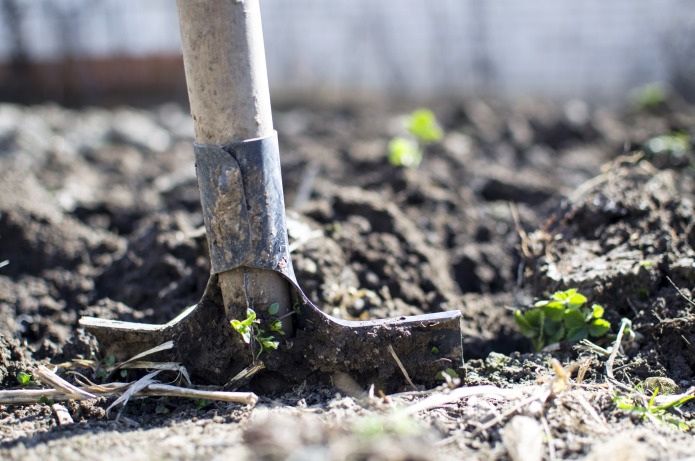What we are trying to do here is plant a tree and have it thrive.
(Continued from Planting 4: Root crown identification)
What we are trying to do here is plant a tree and have it thrive. Everything I have said about planting is moving toward that goal. Aspects of the planting hole are also very important. I want your tree to have a really good year after it is planted and to “take off.”
Many incorrectly planted trees sulk for years and then die. The most common cause for this is deep planting, burying the root crown farther below the surface than it should be. Deep down in the clay, there is very little available oxygen and these trees suffocate. The roots need lots of oxygen to perform their varied tasks, and nature has decided that they do it best when the root crown is planted at the soil surface.
We want to plant a tree at the right height with a layer of rich, tilled soil all around the root ball. This will make it as easy as possible for the new roots to leave the root ball on their journey to explore for available water and nutrients. The worst case would be a tight hole just the size of the root ball, whose walls are old, hard, undisturbed soil, difficult for the new roots to penetrate. Opinions differ as to how much space should be left around the new root ball for the rich, tilled quality soil you are going to fill the hole with.
When I say tilled, I am referring to soil that has been recently dug up or moved, perhaps soil you had delivered, soil that is not compacted—a good quality soil that the new root growth will thrive in and move into easily. Black loam. This is how the tree begins its establishment phase. If your root ball is 18 inches in diameter, make the hole 36 inches wide. Use this ratio of double the diameter of the root ball for all new plantings, no matter the size. If you come close to this ratio, your tree will be thrilled.
People talk about loose soil at the bottom of the hole. If you add new soil at the bottom, make sure to pack it firmly or it will settle. As it settles, so will the whole tree, lowering the root crown into the soil. I use a measuring tape when I do this. Measure how deep the root ball is and measure the hole as you dig. When these measurements match, you have dug deep enough.
As you dig through the layers, separate the soil. Keep the dark, loamy soil separate and reuse it. The light brown clay can be discarded. Before placing the root ball in the hole, remove any bucket or container. If the tree is wrapped in burlap, that can stay. If planting a large tree in a steel wire basket, be sure to remove all ropes, fibreglass tape, or anything wrapped around the trunk. These are deadly if left encircling the trunk. Years later, the tree’s greater diameter will tighten up the tape so that it chokes and kills the tree.
Another item you hear about before planting is slashing or cutting the roots at the edge of the root ball to stimulate new growth. I don’t like this and have never done it. I never buy root-bound plants. When choosing plants in pots, I always remove the pots to inspect the roots before purchase.
Now place the root ball in the hole and if the tree is large, have someone hold the trunk straight while you fill the space around the root ball with the quality soil you have set aside for this. Add about one third of the depth and pack it with your boot. Repeat until you reach the root crown. Some people like to amend the soil at this point with peat moss, fertilizers, and other components. Mics can be helpful, but all the tree really needs is good black loam.









